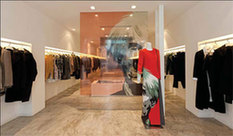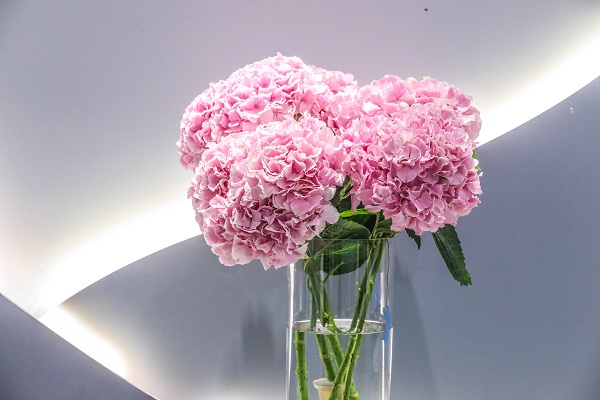|
Boutique stores in the leafy confines of Jinxian Road, a fashion cluster in downtown Shanghai. [Photo Provided to China Daily] |
Fashion retailers find small is beautiful and profitable - But there's a snag
 |
|
Liao Xiaolin's first boutique store, Content, in Jinxian Road. [Photo Provided to China Daily] |
Changle Road and Jinxian Road are two thoroughfares the kind of which Shanghai specializes in - narrow arteries that would barely qualify for the use of the word road anywhere else, and where washing hanging on lines that run from one building to another is part of the everyday scenery.
Both streets, running parallel to one another about 100 meters apart, are in the city's former French Concession area, and are 300 meters south of the much better known Huaihai Road, with its sparkling skyscrapers that house department stores and shopping malls stocked from ceiling to floor with top-branded goods.
What Changle Road and Jinxian Road have in common, apart from rising rents, is fashion, both having become enclaves for independent designers over the past seven or eight years.
Changle Road used to be where you could buy clothes originally made for export at cut-rate prices. But after homegrown Shanghai designers arrived on the scene in the mid-2000s it turned from a repository of cheap, imitation clothes and accessories into a gathering place for cool and chic fashion stores.
Designer boutiques with names like Even Penniless, Jade en Plus, Estune and One by One set up shop on the 1-kilometer stretch, making a name for themselves with their individuality.
The street was given a fillip before Shanghai Expo 2010 when the local government improved the area, including repaving roads and footpaths and sprucing up buildings.
| ||||
But in recent years the quaint, off-the-beaten-track surroundings that helped bring these businesses success has turned into a burden as they found Changle Road's old houses were too small to present their wares. They then moved out to sprawling shopping malls or other multi-brand boutiques, and the tenants who replaced them were left to pay the price for their predecessors' success.
Tony Daryanani, an Indian tailor, has lived in the street and done business there for 15 years. He knows something about the rents, having had three different premises in that time. He now runs his business, Tony the Taylor, from an old three-story house with a floor area of 390 square meters, having signed a three-year lease about a year ago under which he pays 45,000 yuan ($7,230; 5,370 euros) a month.
"I got my previous shop, over 80 sq m, for 13,000 yuan a month in 2008. Two years ago the first lease ended, with the rent at 17,000 yuan. But this year the landlord was asking for about 25,000 yuan."
He decided to give up the 80 sq m shop, and in December a flyer was still pasted on the old shop window directing customers to the new premises across the road.
"I started with nothing here, and I have more than 10,000 customers now. All customers know that I am here. Right now the business is doing very well, but if the rents keep rising, we will have to make the shop smaller."
Daryanani says that when he first set up shop, much of Changle Road's pedestrian traffic consisted of tourists, many of them from overseas. But as the business has gained a reputation, more locals have become customers, and now account for more than a third of the clientele, he says.


